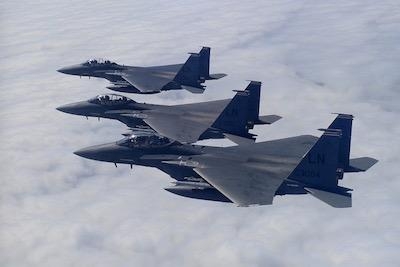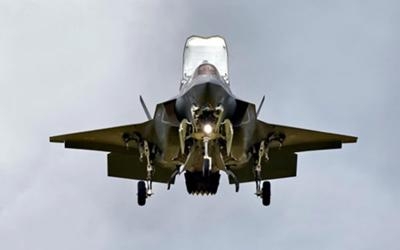Tue, Oct 14, 2025
Air Force Chief of Staff Cites Lack of Spare Parts, Aging Fleets, Supply Chain Issues
The US Air Force’s next Chief of Staff nominee says pilots are flying too little to maintain proficiency, citing chronic issues with spare parts, aging aircraft, and supply chain delays. Gen. Kenneth S. Wilsbach told Senators on Oct. 9 that fighter pilots currently fly about two to two and a half times per week…far short of what he sees as necessary for combat readiness.

“That is not enough,” he said.
Wilsbach was nominated by President Trump on September 30 to succeed Gen. David Allvin. He explained that aircraft availability has dropped to roughly half the fleet, with many jets grounded awaiting maintenance or parts. Even newer aircraft such as the F-35 are suffering delays, he claimed, adding that just over 67 percent of Air Force aircraft were mission capable in fiscal 2024: the lowest rate in a decade.
Plane availability is directly tied to time in the cockpit. Today’s fighter pilots average only about five flight hours per month, compared to nearly five flights a week when Wilsbach was a fresh F-15 pilot in the 1980s. While simulators help make up the difference, he argues that they can’t fully replace live flying.

“You don’t look at any professional sports person athlete that practices two times a week—they practice almost every day,” Wilsbach told lawmakers.
Wilsbach required pilots to fly at least three times per week in his role as Air Combat Command chief, and he plans to resurrect this quota in his upcoming term. He notes that the key is investing in sustainment and spare parts so maintainers can quickly repair aircraft instead of waiting on delayed shipments.
“...The Airmen that work on the flight line can turn around to the shelf, grab the part, put it in the airplane, and now it’s going to perhaps be several more days before that jet needs to be maintained again. And that all the time where it’s sitting, waiting for that part, is downtime where we can’t use the aircraft to train. So that investment is really important to backfill the shelves with parts,” he continued.
More News
Mid-Continent Instruments and Avionics and True Blue Power ANN's NBAA 2025 Coverage... Visit Them At Booth #3436 101 Aviation Nears STC Approval for Lithium Battery Upgrade on Gulf>[...]
Hertz The standard radio equivalent of frequency in cycles per second of an electromagnetic wave. Kilohertz (kHz) is a frequency of one thousand cycles per second. Megahertz (MHz) >[...]
“NATCA does not endorse, support, or condone any federal employees participating in or endorsing a coordinated activity that negatively affects the capacity of the NAS, or an>[...]
Aero Linx: European Association for Aviation Psychology (EAAP) Since 1956 the European Association for Aviation Psychology (EAAP) provides a forum for professionals working in the >[...]
Aircraft Experienced A Total Loss Of Engine Power During A Go-Around Attempt And Then Impacted A Soybean Field On September 13, 2025, at 1625 eastern daylight time, a Pegasus Quant>[...]
 True Blue Power and Mid-Continent Instruments and Avionics Power NBAA25 Coverage
True Blue Power and Mid-Continent Instruments and Avionics Power NBAA25 Coverage ANN's Daily Aero-Term (10.11.25): Hertz
ANN's Daily Aero-Term (10.11.25): Hertz Aero-News: Quote of the Day (10.11.25)
Aero-News: Quote of the Day (10.11.25) ANN's Daily Aero-Linx (10.11.25)
ANN's Daily Aero-Linx (10.11.25) NTSB Prelim: Pegasus Quantum 15
NTSB Prelim: Pegasus Quantum 15




